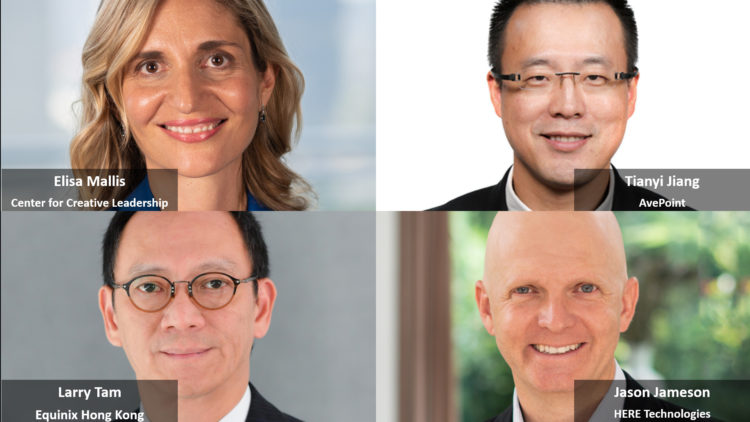“Bad companies are destroyed by crisis, Good companies survive them, Great companies are improved by them.” Andy Grove, former CEO, Intel Corporation.
In good times and in bad, we look to leaders to guide and inspire us and lead us out of the crisis. At the start of 2022, we thought it would be good to look at how we got to where we are today, and what lessons we can draw from before and during the early periods of the pandemic to guide us moving forward.
How leaders behaved pre-pandemic

Elisa Mallis, managing director and vice president for Asia-Pacific (APAC) at the Center for Creative Leadership (CCL), noted that shareholder primacy was the dominant narrative in the pre-COVID-19 world. “Leaders were expected to focus on delivering value to investors. On a more personal level, the vulnerability in leaders was often assumed to be a weakness rather than a strength,” she added.
For his part, Jason Jameson, SVP & general manager for APAC at HERE Technologies, observed that before the pandemic, most business leaders valued face-to-face interactions – be it with customers or with employees – using every possible opportunity to connect in person.
“The social aspect of speaking to someone within the same physical setting was important, so people catch up over coffee or have lunch informally,” he continued.
Commenting on the wave of digital transformations that started well before the pandemic hit us, Equinix Hong Kong managing director, Larry Tam, acknowledged that business leaders already realised the importance of digitising their business but many of them were taking a more reactive approach and the pace of digital transformation was also slower when compared to post-pandemic.
Tianyi Jiang, founder and CEO of AvePoint, noted that before 2020, CEOs, CIOs, and business leaders were confident and more likely to be risk-takers. “Business leaders invested capital and resources into business transformation – such as retiring legacy systems and moving workloads to the cloud to take advantage of Software-as-a-Service (SaaS) lightweight infrastructure and scalability,” he added.
How leaders responded to the pandemic
On 9 January 2020, the World Health Organisation acknowledged a cluster of mysterious pneumonia-like cases in Wuhan, China, in late 2019 that might have been caused by a previously unidentified coronavirus. By the end of January, the coronavirus had spread to Thailand, Japan, and the United States.
In a big to contain the pandemic, government-sanctioned lockdowns became the norm in APAC. Remote work or work-from-home quickly became the norm.

“Business leaders and employees alike, we all had to adapt to working remotely, away from the office, and away from our colleagues. But as business leaders, we had to make sure that while we were being physically apart, we remained closely connected. We found new ways and new channels to connect with individuals, both at work and home,” said Jameson.
Lockdowns forced the closure of many industries. As Mallis noted: 2020 was about survival for many organisations. To remain afloat, leaders had to be agile, accelerating their digitalisation and significantly pivoting their business strategy around new markets, competitors, and new ways of working.
“Amid a very dramatic human health crisis, balancing high tech and human touch became equally important for leaders to not only allay fears of employees with care and empathy but also nurture critical relationships with customers and vendors,” she continued.
The business transformation efforts that started before the pandemic got a renewed sense of urgency and accelerated timelines – all while operating in a constant state of social distance.
“Leaders also had to review their support structure in the workplace for employee empowerment. To maintain job satisfaction, employee care and engagement escalated, and business leaders had to ensure regular check-ins and to provide sufficient online support, as not all tech platforms were intuitive for all,” said Jiang.
Leadership lessons in 2021
By end of 2020, it was clear that the pandemic was far from over. But many organisations have adapted to the state of work, so it was a matter of pushing ahead new ways of doing business to stay afloat. Resilience became the new business buzzword.
Mallis noted that leaders were moving from survival to strategic pivot. They were cultivating a growth mindset that sought to continuously rediscover, unlearn, and re-learn. These became an essential requirement for leaders driving digital transformation.
She added that as leaders navigated the drawn-out pandemic, many discovered new ways to build resilience within themselves and their teams to burn bright rather than burn out. “Finally, leaders had to discover untested approaches of leading in a hybrid workplace to maintain a healthy talent pipeline and drive the organisation forward through the economic recovery,” opined Mallis.
To be fair, not everything was smooth sailing. Jiang noted that from financial portfolios to consumer accessibilities, several impediments existed across value chains surfaced when business leaders stayed rigid.
“CEOs must lead the change, but diversity is key. Training and development programs guided by a strong leader to support a diverse mix of talent can help facilitate continuous learning, growth mindset, and talent retention.
Jameson said leaders were expected to provide teams with a sense of purpose – providing clear guidance for the team on what are the common goals and objectives and keeping them motivated and excited about work every day.
He observed that motivated employees tend to be more productive and allow organisations to achieve higher levels of output.
“I think providing purpose when there has been so much uncertainty around the pandemic has allowed teams to perform their best work and helps them with levels of resilience needed in these times,” he posited.
Priorities for 2022

Equinix’s Tam predicts that hybrid multi-cloud will become the predominant architecture in application modernisation and infrastructure service delivery in 2022. He also posited that artificial intelligence and machine learning will increase in sophistication as enterprises demand infrastructure and applications that are operationally self-resilient.
“At the same time, sustainability will be a core, non-negotiable measure of business success as companies and their supply chain partners universally commit to a net-zero carbon footprint for every facility, product and service development,” he added.
Remote work is nearing permanency for many employees and businesses. HERE’s Jameson suggested a need to reassess what has worked for employees (so far) and how much employers can acquiesce to these demands.
“It’s been two hard years, and people will be looking at employers for more flexibility. Commute will be demoted, and people will want to work from where they want to work, he continued.
CCL’s Mallis commented that the pandemic has called into question the socio-economic future of communities and organisations. Many people around the world have re-evaluated their priorities – leading to a great resignation as they seek greater purpose and balance.
“Nurturing corporate purpose, offering flexibility, and demonstrating care with a human touch will be hallmarks of organisations that successfully recruit and retain top talent. They will need to appeal to the workforce of the future by developing profitable yet ethical activities that create both economic and social value,” she suggested.
To which Jameson posited that businesses are likely to weave in wellbeing strategies into broader business game plans – finding ways to do achieve business goals and objectives without the expense of employees’ privacy, wellbeing, and personal lives.
How leaders should lead in 2022
So how should leaders operate in 2022? Tam suggested maintaining a flexible mindset – to be prepared for the unexpected.

“Leaders should hold an adaptable mindset to provide employees flexibility and empower them to nurture a versatile working environment. Leaders should establish clear guidelines for different working models so that employees will be able to easily adapt and continue to deliver value for clients and partners,” he posited.
AvePoint’s Jiang concurred adding not to be afraid to embrace technology and ensure its accessibility to all. “Leaders should seek and analyse data proactively to predict trends to keep ahead of competitors. Be forward-looking to ensure support is provided to upskill the workforce,” he continued.
Mallis believed that leadership teams must take on the shared responsibility of building purpose-led organisations that go beyond “feel-good” statements to embed corporate purpose in all aspects of business decision-making.
“We must also nurture aspiring young leaders, unlocking their full potential to mobilise and enact positive change. Leaders must develop more meaningful leadership opportunities where youth can thrive and drive real change, she concluded.





